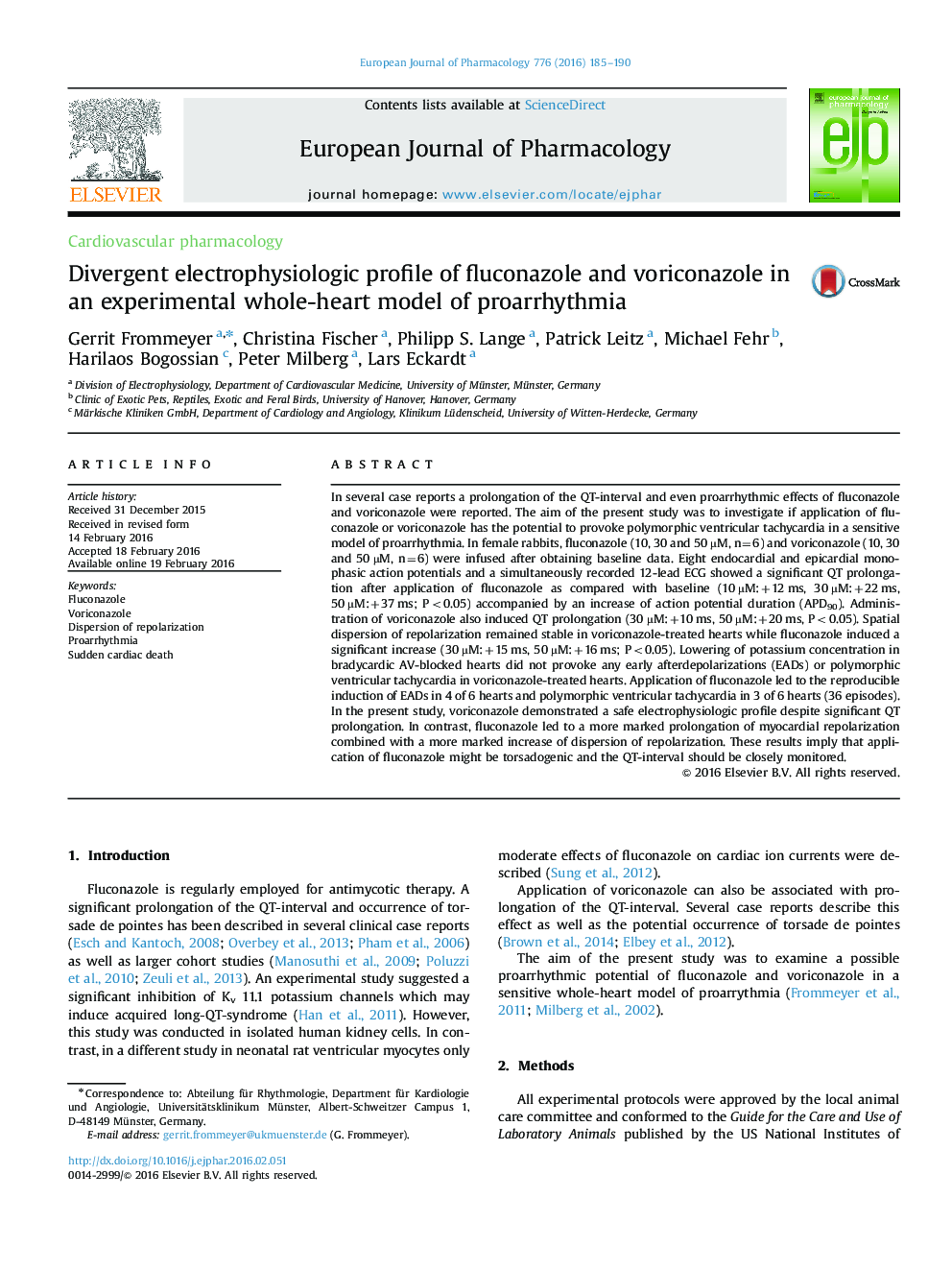| Article ID | Journal | Published Year | Pages | File Type |
|---|---|---|---|---|
| 2531110 | European Journal of Pharmacology | 2016 | 6 Pages |
In several case reports a prolongation of the QT-interval and even proarrhythmic effects of fluconazole and voriconazole were reported. The aim of the present study was to investigate if application of fluconazole or voriconazole has the potential to provoke polymorphic ventricular tachycardia in a sensitive model of proarrhythmia. In female rabbits, fluconazole (10, 30 and 50 µM, n=6) and voriconazole (10, 30 and 50 µM, n=6) were infused after obtaining baseline data. Eight endocardial and epicardial monophasic action potentials and a simultaneously recorded 12-lead ECG showed a significant QT prolongation after application of fluconazole as compared with baseline (10 µM:+12 ms, 30 µM:+22 ms, 50 µM:+37 ms; P<0.05) accompanied by an increase of action potential duration (APD90). Administration of voriconazole also induced QT prolongation (30 µM:+10 ms, 50 µM:+20 ms, P<0.05). Spatial dispersion of repolarization remained stable in voriconazole-treated hearts while fluconazole induced a significant increase (30 µM:+15 ms, 50 µM:+16 ms; P<0.05). Lowering of potassium concentration in bradycardic AV-blocked hearts did not provoke any early afterdepolarizations (EADs) or polymorphic ventricular tachycardia in voriconazole-treated hearts. Application of fluconazole led to the reproducible induction of EADs in 4 of 6 hearts and polymorphic ventricular tachycardia in 3 of 6 hearts (36 episodes). In the present study, voriconazole demonstrated a safe electrophysiologic profile despite significant QT prolongation. In contrast, fluconazole led to a more marked prolongation of myocardial repolarization combined with a more marked increase of dispersion of repolarization. These results imply that application of fluconazole might be torsadogenic and the QT-interval should be closely monitored.
